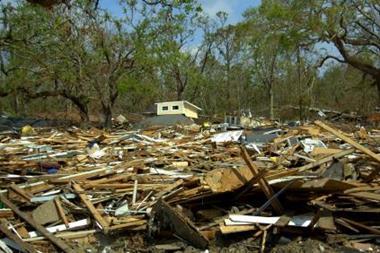Reinsurance buyers experienced confusion and inconsistency at this month’s reinsurance renewals
Early indications suggest that the 1 January 2012 renewals were a messy affair. Prices did not respond uniformly, and either rose or fell relating to loss experience.
While reinsurance buyers often clamour to be treated individually and not be subject to broad-brush pricing, the conditions seen at the beginning of this year have caused some confusion as buyers attempted to reconcile the price of reinsurance with their own rates and risks.
“The market is increasingly segmented, with rate movements being driven by individual loss history and perceived exposure movements, and not by an overall blanket increase,” wrote Willis Re chairman Peter Hearn in his company’s renewals overview. “While this is a superficially logical approach, it has led to significant differences in rate levels, which some buyers have found difficult to assimilate as they struggle to manage the margin between their original pricing and the cost of reinsurance.”
Asia goes up
As widely expected, prices increased sharply in the Asia-Pacific property-catastrophe market. The region was hit heavily by natural catastrophe events in 2011, with the earthquakes in New Zealand and Japan responsible for the bulk of the losses. Australia and New Zealand combined saw catastrophe-hit property rates rise between 80% and 150%, according to Willis Re, while Australia alone experienced rate increases of between 40% and 75%.
However, there is even confusion here. While the 1 January renewals give an indication, most Asian business renews on 1 April.
There has been so much loss activity that it will take time for the market to stabilise”
Brian Boornazian, Aspen Re
“January is not the most significant renewal date for Asian reinsurance, so much of the story is still to unfold. But early signs are that we will see inconsistent corrections,” Aspen Re chief executive Brian Boornazian said at a renewal conference call today. “There has been so much loss activity that it will take time for the market to stabilise. Some renewals in January were sensible and reflected appropriate lessons learned. However, others have been very disappointing.”
Catastrophe consequences
Rate increases, though more muted ones, were seen in other catastrophe-hit property programmes. The Middle East saw rate increases of between 10% and 30%, according to Willis Re’s figures, while the Nordic countries saw price rises of between 25% and 50%.
In some countries there were large divergences in price dependent on loss experience. In Italy, for example, property programmes that did not suffer risk losses saw 10% decreases, while property programmes with losses saw 20% rises.
Liability rates, on the other hand, remained stubbornly soft in many territories at 1 January – except where there were losses. Rate changes on liability excess-of-loss programmes with no losses ranged from flat to 10% reductions in US general liability, motor, and professional liability.
Even losses were no guarantees of a rate increase. On loss-hit programmes, US general and liability rate changes ranged from flat to 5% increases, while loss-hit professional liability rate changes ranged from flat to 10% increases.
Holding out for a hard market
While there are many catalysts for a more uniform hard market in the reinsurance world, in particular low interest rates and the introduction of version 11 of risk modelling firm RMS’s windstorm models in the USA, some expect it to take some time.
“We are finally seeing evidence of a market turn,” Aspen Re’s Boornazian said. “But, unlike previous turns, the market this time appears positioned for a less dramatic, more prolonged, hardening.”
However, another major catastrophe could change everything.
Hosted by comedian and actor Tom Allen, 34 Gold, 23 Silver and 22 Bronze awards were handed out across an amazing 34 categories recognising brilliance and innovation right across the breadth of UK general insurance.













































No comments yet